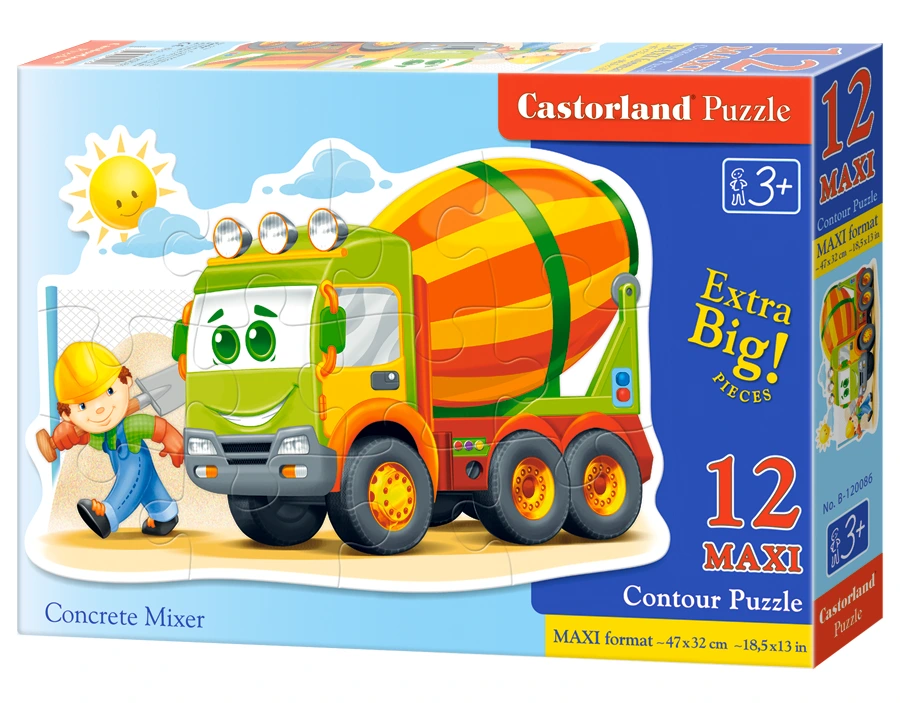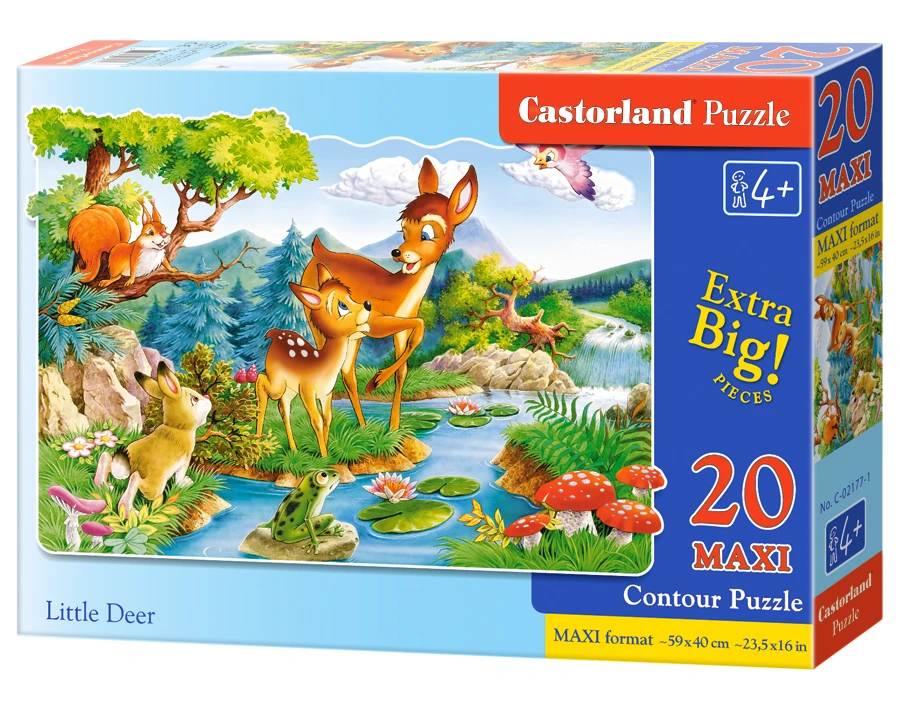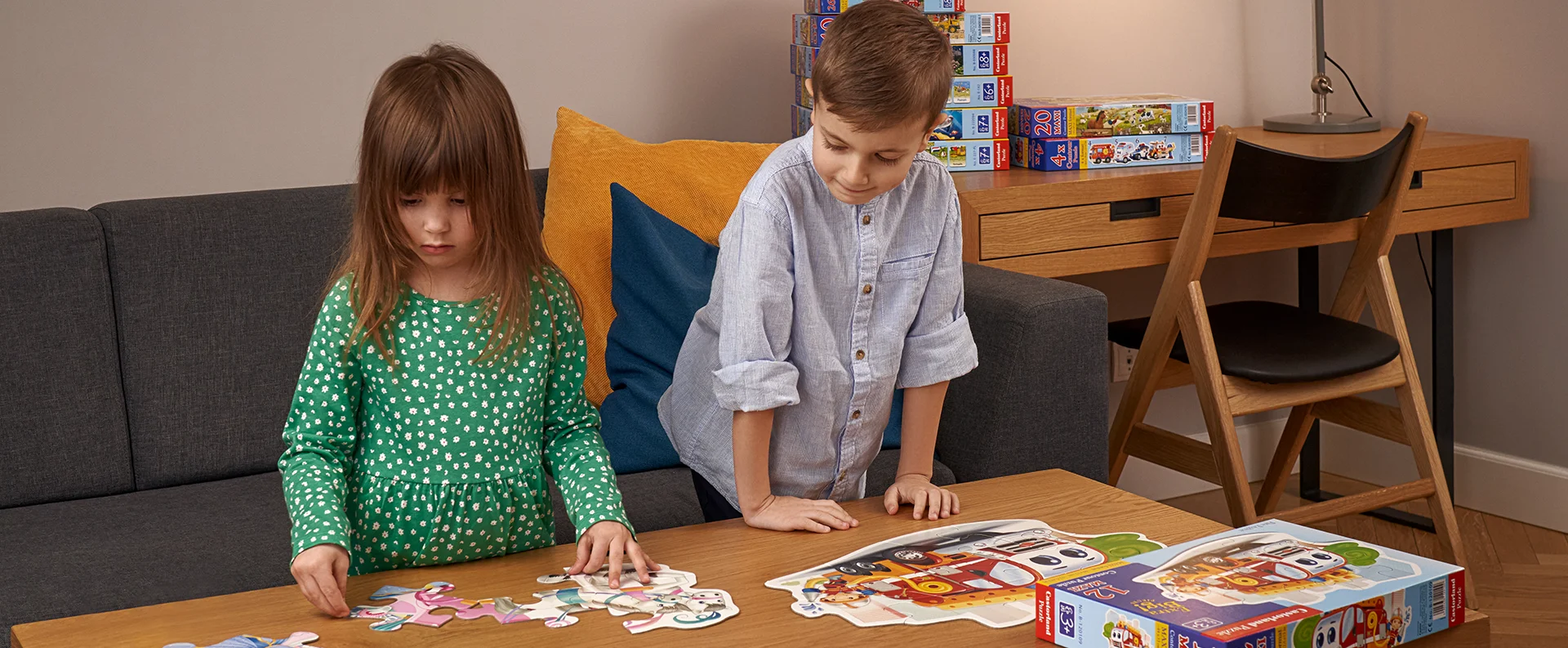A correctly chosen puzzle can be a source of satisfaction and development while having fun. However, giving a child too difficult a task may cause boredom, or even frustration. It’s worth remembering this when choosing a puzzle. Below are a few tips on how to best match the puzzle to the child’s skills and development.
Benefits of puzzles
Puzzles provide good practice in manual skills, visual perception, and also the cognitive skills responsible for the organisation and strategy of the piecing together process. Puzzles teach patience and perseverance, and the reward is the satisfaction of the complete image. Puzzles can be a stand-alone activity, but also a great pastime for a group of friends or family.
How to assess the difficulty?
The level of difficulty is influenced mainly by factors such as:
- number of pieces
- piece sizes
- the degree of detail of the picture and colour variation
- the child's experience with jigsaw puzzles
- the quality (cardboard thickness, susceptibility to bending and twisting of the pieces, precision of cutting)
- other features that can help in arranging (image contours, piece shapes, etc.)
When to start?
Castorland Puzzles are designed for children over three years of age. This is the right time to start having fun with cardboard puzzles, where the complexity is slightly higher than the blocks and shaping toys. At this age, the child usually stops to explore the world using its mouth and begins to improve manual dexterity and visually recognise which parts of the image match. If the child has had no previous contact with puzzles, it'll certainly be useful for a parent to help.
Puzzles for a 3-year old
We would suggest that the youngest begin their jigsaw experience with large pieces that can easily be grabbed and rotated. It’s important to choose an appropriate puzzle for the child’s interests.
At this age, your child likes to see well-known objects and characters with which they have previously had contact. We offer the most popular fairytales and bedtime stories read around the world. Moreover, there are animals, vehicles and situational scenes.

A good start is provided by products from the 4xPuzzle range, containing a set of 4 images divided into 4, 5, 6 and 7 elements each. It should be stressed here that these are contoured pictures, which make it very easy to identify the content of the illustration. In addition, the pictures have graduated levels of difficulty. You start with the image with the smallest number of elements, and after success work on the next, which is only slightly more difficult.
As further jigsaws for 3-year-olds who have more experience, we suggest puzzles from the 4xPuzzle series containing a set of 4 images divided respectively into 8, 12, 16 and 20 elements each

With the increase in experience from the first puzzles, your child begins to deal freely with rotation and joining of pieces. Although they still often use trial and error – they begin to work out the first systematic method of testing the match. This is a sign that you can move on to puzzles with a larger number of pieces or more complex illustrations.
Closer to the age of five, we offer puzzles in the series 4xPuzzle (30 +40 +50 +60 pieces). And then, 60-piece Puzzles.
6 to 8 years
Six-year-olds have developed enough synthetic capability that they are able to define the pieces in relation to their place in the puzzle. They can also sort them. They can develop their own methods (strategies) for doing the puzzle – according to the shape, colour, or object in the picture. Children in this age group are looking for toys that they’ll find more challenging. Depending on their previous experience, eight-year-olds can cope with puzzles with 260 and even 500 pieces.
The number of pieces we suggest and the degree of complexity may vary depending on the individual child's ability. Bear this in mind.
Let's puzzle!
| Product Line |
Suggested age |
Average piece size (cm) |
| Puzzle 4000 |
|
1,7×1,5 |
| Puzzle 3000 | | 1,6×1,4 |
| Puzzle 2000 | | 1,9×1,7 |
| Puzzle 1500 | | 1,6×1,4 |
| Puzzle 1000 | | 1,9×1,7 |
| Puzzle 500 | 9+ | 1,9×1,7 |
| Puzzle 300 | 8+ | 1,9x2,1 |
| Puzzle 260 | 8+ | 1,9×1,7 |
| Puzzle 200 | 7+ | 2,3x2,6 |
| Puzzle 180 | 7+ | 1,9x2,1 |
| Puzzle 120 | 6+ | 2,5x2,4 |
| Puzzle 100 | 6+ | 2,9x3,8 |
| Puzzle 70 | 5+ | 3,5x4,5 |
| Puzzle 60 | 5+ | 3,8×3,2 |
| Puzzle 30 | 4+ | 4,6×5,3 |
| Puzzle 20 MAXI | 4+ | 10×12 |
| Puzzle 40 MAXI | 4+ | 8×7,4 |
| Puzzle 12 MAXI | 3+ | 10×12 |



